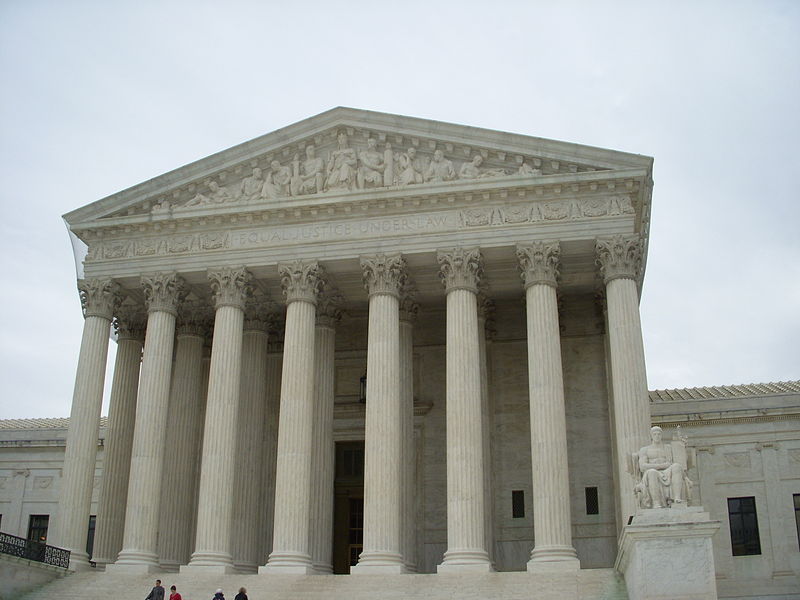Fraudulent Obstruction of Information Act – FOIA
The U.S. Navy has refused to release a public document that proves they lied. This well-documented chronicle of lies and obstruction is not likely to bring justice, but the beauty of the internet is the lies are very public. Having repeated those lies on October 31, 2013, the Navy has restarted their five-year Statute-of-Limitations clock.
In June 2014, former County Commissioner Kim Wigington (Monroe County, Florida) appealed the Navy’s rejection of a Freedom of Information Act (FOIA) request she submitted in 2011. Below is the latest chapter in the seven-year history of fraud, abuse and obstruction.
Background
In 2007, as the number of F/A-18E/F Super Hornet flights and the associated noise increased around Naval Air Station Key West, citizens raised concerns. The Navy responded (see Answer #4) that they had analyzed the impacts of the aircraft in a 2003 “Environmental Assessment” (EA). While the EA was well known to Keys residents because the subject was proposed dredging of Key West Harbor, this is the first time (four years later) the Navy claimed that this document also pertained to and exonerated the Super Hornet. More surprising, only three pages of the 232-page EA mention the aircraft. The remaining 229 pages address the environmental impacts of dredging.
Even more compelling, the preceding document—Draft EA (also known as the Pre-Release Draft EA)—that was distributed to at least eleven public agencies for comments, does not mention the aircraft, nor do any of the comments received back from those agencies.
Not once.
In fact, no preceding document mentions the airplane, back to the original 2002 notification of a “planned action” to dredge Key West Harbor by NAS Key West Captain L.S. Cotton.
It is the Draft EA that has been sought through the Freedom of Information Act (FOIA). In response to this columnist’s FOIA inquiry and appeal, the Navy said that despite a “diligent search” they were unable to locate the document. Their response to Ms. Wigington’s ongoing request for the document was that the document was exempt from release to the public.
In one case, they said they couldn’t find it, in another they said it is exempt.
Subsequent to the U.S. Navy’s inability to locate the document, this writer located the document and photocopied incriminating pages. Section 4.10 of the Draft EA would discuss the environmental impacts of noise related to the Super Hornet, if it were the subject of the Environmental Assessment. There is no mention of the aircraft.
The Draft EA is a smoking gun that proves the Navy lied.
It’s very simple – the Navy claims that it properly evaluated the environmental impacts of the Super Hornet and yet this key document—the one distributed to the public and numerous public agencies informing them of the intended action and asking for their comments—does not mention the aircraft.
Thus, neither the public nor any of the reporting agencies were aware of and there is no document before the Draft EA that even hints to the Navy’s 2007 revelation that the 2003 Environmental Assessment applied to the Super Hornet.
Neither the U.S. Attorney, nor the FBI have acted on this writer’s fully documented formal complaint, centering on this citation of our criminal code:
18 U.S. Code § 1001: “Except as otherwise provided in this section, whoever, in any matter within the jurisdiction of the executive, legislative, or judicial branch of the Government of the United States, knowingly and willfully–
- falsifies, conceals, or covers up by any trick, scheme, or device a material fact;
- makes any materially false, fictitious, or fraudulent statement or representation; or
- makes or uses any false writing or document knowing the same to contain any materially false, fictitious, or fraudulent statement or entry; shall be fined under this title, imprisoned not more than 5 years…”
Navy officials have made materially false statements, knowingly and willfully.
They have lied and stonewalled for seven years.
Auspiciously, the “last overt act”—that restarts the five-year Statute of Limitation—was October 31, 2013. The Record of Decision (ROD) for the NAS Key West Final Environmental Impact Statement (FEIS), signed on that date by Roger M. Natsuhara, Principal Deputy Assistant Secretary of the Navy (Energy, Installations & Environment), includes the same false statement that the 2003 Environmental Assessment satisfied the Navy’s legal obligation to evaluate the impacts of introducing the Super Hornet to Naval Air Station Key West.
For the most comprehensive history of the lies, please consult this link. For the fruitless complaint to the FBI and the U.S. Attorney’s office, consult this link.
Update
When Monroe County (Florida) Commissioner Kim Wigington submitted an official FOIA request for the same document in June 2011, the Navy refused to release the document, claiming that the Draft EA was “exempt from disclosure” by virtue of “Exemption 5” of the Freedom of Information Act, “…which exempts internal government communications that are a part of the deliberative process,” as detailed in the Judge Advocate General’s rejection letter of May 2014.
Ms. Wigington’s June 2014 appeal describes the issues:
[The Navy] denied a copy of the “Pre-Release Draft Environmental Assessment for Maintenance Dredging of Key West Channel and Truman Annex Harbor” (PRDEA) dated February 11, 2003 with the rationale that release of that document is protected by 5 U.S.C. §552(b)(5). The letter stated that to do so would “…cause foreseeable harm to the deliberative process privilege…” Exemption 5 applies to documents “…which would not be available by law to a party other than an agency in litigation with the agency.”
The Department of Justice Guide to the Freedom of Information Act (2009 Edition), page 357, states courts have construed Exemption 5 to “…exempt those documents, and only those documents that are normally privileged in the civil discovery context.”
The PRDEA is therefore not exempt, because it is a public document, one already freely disclosed to other persons outside of the scope of the claimed privilege. Distribution of the document in question was an integral part of the National Environmental Policy Act (NEPA) process, in which the public and reporting agencies are provided the draft document in order to submit comments for inclusion in the final document.
The document was sent by the Navy to at least eleven public agencies for their comments, including…
- U.S. Department of Interior, Fish and Wildlife Service,
- Florida Fish and Wildlife Conservation Commission,
- Florida Department of Transportation,
- South Florida Water Management District,
- Florida Department of Environmental Protection,
- Florida Keys National Marine Sanctuary,
- United States Department of Commerce, National Oceanic and Atmospheric Administration, National Marine Fisheries
After receiving copies of the PRDEA, those agencies reviewed the document and submitted comments. The document is specifically referred to in several of the letters in Appendix E “Letters Received from Agencies” of the 2003 Environmental Assessment, demonstrating its public distribution and proving that this document does not qualify for the claimed privilege.
Navy officials who made false statements and concealed the facts have committed felonies.
~~~~~~~~~~~~~~~~~
John Hammerstrom is a graduate of Union College in Schenectady, New York, a retired U.S. Navy Commander, former Senior Engineering Test Pilot for the Grumman Aerospace Corporation and a retired international Captain for American Airlines


This is a remarkable story of official malfeasance. Thank you for your perseverance, John.
I don’t know what more you can do. I doubt they care what the public thinks. Who would be the ones to prosecute their felonies?
Thank you, Rick.
The U.S. Attorney’s office would prosecute.
* The FBI was made aware and did nothing.
* A formal complaint was sent to the U.S. Attorney’s office in Miami.
* They sent it to the FBI.
John,
Excellent work. A detailed and cogent presentation of the facts.
As you know, there is a problem. “The FBI was made aware and did nothing. A formal complaint was sent to the U.S. Attorney’s office in Miami. They sent it to the FBI”…Really…Round and round we go.
If you can, contact me.
Do not forget. The same league of people you are appealing to to be honest and obey the law are the same league of people that were in charge of this country’s safety and well being prior to 9/11.
Good luck with trying to make this group of lowlifes respond to anything. .
Keep voting in Democans and Republicrats and this is what we deserve!
As a former Navy Officer, you should know that draft EAs are, in fact, exempt from FOIA. Regardless of the answer you or others received from the Navy, the fact is you’re not entitiled to it — no matter how much that upsets you.
As for the statement that “Neither the U.S. Attorney, nor the FBI have acted on this writer’s fully documented formal complaint …”, you should be glad they haven’t — while filing a frivolous complaint probably isn’t a crime, it makes you look bad.
Mr. Jackson is choosing to ignore the real issue – fraud. I have seen and copied significant portions of the Draft EA, which does not mention the airplane that the Navy claims they fully evaluated. This flies in the face of the Navy’s claim that it was fully compliant with the National Environmental Policy Act. That federal law requires “Agencies” (in this case the Navy) to announce that they plan an “Action.” They are required to list “Alternatives.” If the planned action is found to not have any significant impact, then they will issue a final document, “The Finding of Insignificant Impact” (FONSI).
Introducing the Super Hornet to NAS Key West was never listed as an “Action,” was never listed in the “Alternatives,” and is not mentioned in the FONSI. None of the documents leading up to the Draft EA mention the airplane either. The EA addresses the Action of dredging Key West Harbor, not the introduction of the Super Hornet. The Navy first claimed that this Environmental Assessment applied to the Super Hornet in 2007, four years after the EA was published.
That’s fraud and it is not frivolous.
Mr. Jackson may need to request a public document through FOIA some day, and I suggest he become familiar with the Department of Justice Guide to the Freedom of Information Act. Regarding the issue of whether this Draft EA is exempt, page 357 states courts have construed Exemption 5 to “…exempt those documents, and only those documents that are normally privileged in the civil discovery context.” Since the Draft EA was distributed to public agencies, it is a public document and does not qualify for the claimed privilege. Ms. Wigington has a right to receive a copy of that document.
Mr. Jackson should join the other citizens who are outraged by the fraud and abuse, and the failure of many oversight agencies to act.